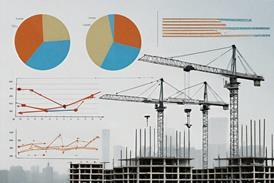A new generation of tall buildings is an exciting prospect, but if British suppliers want to be involved they must develop the expertise. The October seminar organised by Comar Systems focused on the practicalities.
Tall buildings have been out of favour in the UK for decades. The problems experienced with 1950s and ‘60s concrete blocks have meant towers are unwelcome around the country, and in London, the Square Mile remains remarkably low level due to planning restrictions.
All this is set to change, we were told at The Supply & Delivery of Tall Building Solutions, a one day event at the Royal Institute of British Architects (RIBA), organised by Comar Architectural Aluminium Systems. A series of presentations on the state of the art was the programme for the morning, while the afternoon’s Study of Curtain Walling qualified as RIBA approved CPD for architects.
Throughout the country approximately 20 tall buildings are planned to 2008. Increased demand in capacity for office space and residential homes is creating the stimulus. The London Plan estimates that 7-9 million square metres of office space is required in the central zone and, throughout the South East, 600,000 new homes by 2016.
The Vertical City
The concept of the Vertical City was sold at the Comar event by Mohsen Zikri, a chartered engineer and a Director of Ove Arup & Partners in London. He also co-authored the new Design Guide for Tall Buildings for the British Council of Offices (BCO).
Simply put, if the home, workplace and leisure space are close together people will be able to walk and cycle to and from them. These facilities could also be placed in one building.
The building that perhaps best illustrates this mixed use concept is Renzo Piano’s Shard of Glass, also known as London Bridge Tower.
When finished, this Sellar Property Group development will be a 310 metre landmark, and the tallest building in Britain. One Canada Square in London’s Canary Wharf is currently tallest at 244 metres. Construction of the Shard is scheduled to begin in 2007 for completion in 2010.
The Shard will have offices on levels two to 28, a branch of the luxury Shangri-La Hotel on levels 34-52, and living spaces on levels 53 to 65. A public access level on the 72nd floor will give a 360 degree view of London.
New guidelines
An impressive range of speakers at the Comar event covered a range of issues, from the market impetus and planning to construction and testing. David Earle, Technical Officer of the Council for Aluminium in Building (CAB), laid down the criteria for tall buildings, which must of course now include aesthetics and sustainability. Stephen Ledbetter, Chairman of the Centre for Window Cladding Technology (CWCT) outlined the issues to consider for testing.
The CAB-CWCT Thermal Group Committee that has drawn up new guidelines: The Thermal Assessment of Window Assemblies, Curtain Walls and other Non-traditional Walls. The CWCT’s Standard for Systemised Building Envelopes will be published in January.
Case studies
A series of case studies built into the morning presentation served to educate on a number of points, including smaller footprints and silhouettes. Efficient heating and ventilation was frequently discussed – older tall buildings were referred to as the gas guzzlers. Double decker lifts are commonly used on the supertowers.
When you consider that the Guangzhou West Tower, designed by Chris Wilkinson, is 432m, it’s apparent that British suppliers and contractors might be disadvantaged when the Shard goes up.
But as Stephen Ledbetter rightly pointed out, anything over five stories is a tall building because you can no longer construct from the ground. Which is why Comar’s introduction to the design and principles of curtain walling was a very welcome event.
Source
Glass Age





















No comments yet